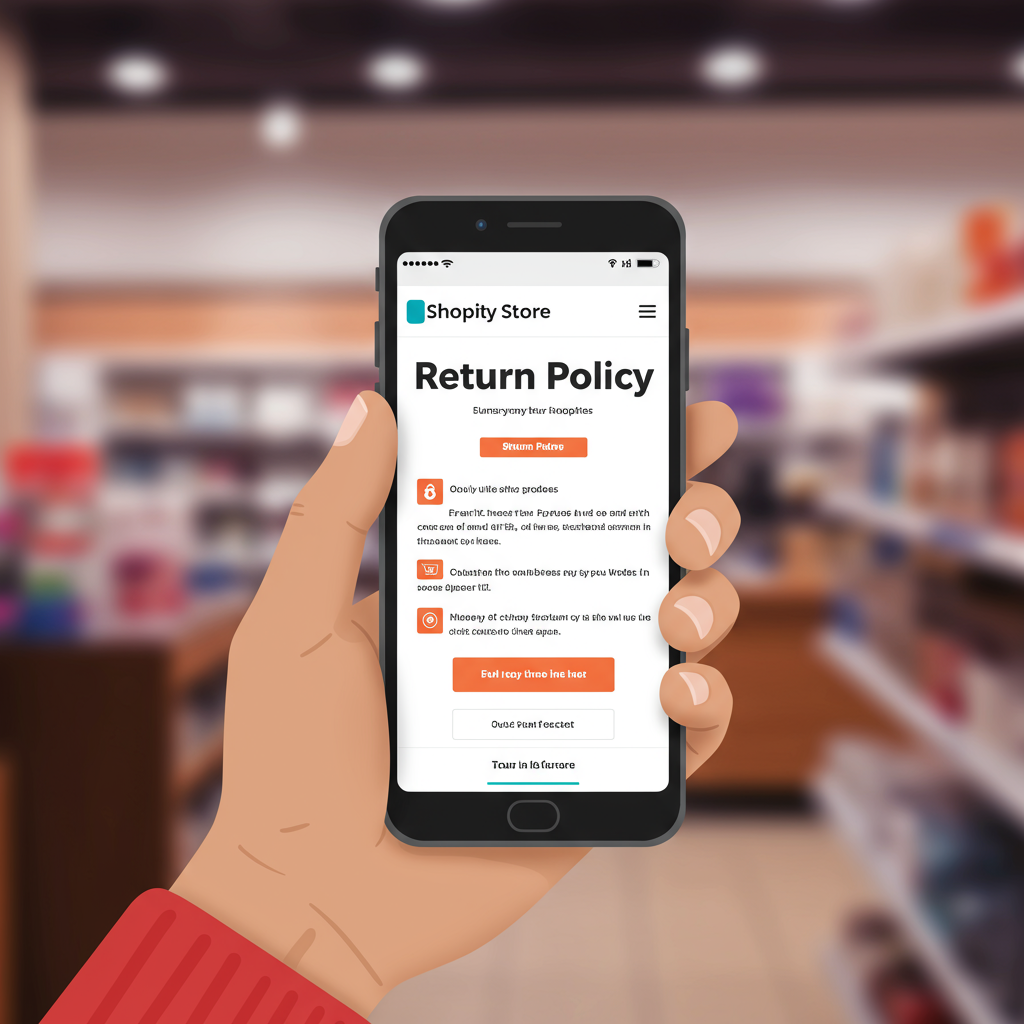As a Shopify merchant, understanding and implementing clear return and refund policies is crucial for customer trust and business success. Let me walk you through it.
As a Shopify merchant, I’ve learned firsthand that one of the most critical components of building a trustworthy and sustainable online business is having a clear, concise, and fair return and refund policy.
It’s not just a legal requirement in many places; it’s a cornerstone of excellent customer service. A well-defined policy can turn a potentially negative experience into a positive one, fostering loyalty and repeat business.
Today, I want to share my insights and guide you through the process of understanding, creating, and managing your return and refund policies specifically within the Shopify ecosystem.
First, let’s clarify Shopify’s role. Shopify provides the platform and tools for you to run your store, but it doesn’t dictate your specific return or refund policy. That’s entirely up to you, the merchant, to define and enforce.
My goal here is to empower you to craft a policy that protects your business while also satisfying your customers, striking that delicate balance.
So, what are the essential elements I believe every robust return policy should include? Let’s break them down one by one.
**1. Return Window:** This is perhaps the most fundamental aspect. How many days do customers have to return an item from the date of purchase or delivery? Common windows are 14, 30, or 60 days. I recommend choosing a period that feels comfortable for your product type.
**2. Condition of Items:** Clearly state that items must be returned in their original condition, unworn, unwashed, unused, and with all original tags and packaging intact. This protects you from receiving damaged or used goods.
**3. Eligible vs. Non-Eligible Items:** Are there certain products you won’t accept returns for? This often includes final sale items, personalized or custom-made products, intimate apparel, digital goods, or perishable items. Be explicit about these exclusions.
**4. Return Process:** How should a customer initiate a return? Do they need to contact you first? Do you provide a return authorization (RMA) number? Do they use a specific portal or just email you? Outline the step-by-step process clearly.
**5. Refund Method:** How will the customer receive their money back? Is it to the original payment method, store credit, or an exchange? Most customers expect a refund to their original payment method, so I generally recommend that.
**6. Shipping Costs:** Who pays for return shipping? This is a common point of contention. Will you cover it for defective items but not for buyer’s remorse? Or will the customer always pay? Be very clear on this.
**7. Exchanges:** Do you offer exchanges for different sizes, colors, or products? If so, explain the process for facilitating an exchange, including any shipping implications.
**8. Restocking Fees:** While less common now, some businesses charge a restocking fee for returns. If you do, state the percentage or flat fee clearly and explain why it’s applied.
Now that we’ve covered the core elements, let’s talk about crafting your policy. My advice is always to be as clear and transparent as possible. Avoid jargon and use simple language.
Shopify offers a basic policy generator within your admin settings (Settings > Legal). This is a great starting point, but I always recommend customizing it to fit your specific business needs and product types.
Don’t just copy-paste; read through it carefully and adjust every sentence to reflect your actual practices. This personal touch builds trust.
Once your policy is written, make it easily accessible on your Shopify store. I typically place links in the footer, on product pages, and within the checkout process. Customers should never have to hunt for it.
Implementing returns and refunds on Shopify is quite straightforward once you have your policy defined. When a customer requests a return, you’ll manage it directly from your Shopify admin.
Navigate to the ‘Orders’ section, find the relevant order, and you’ll see options to ‘Refund’ or ‘Return items’. Shopify’s interface makes it intuitive to process full or partial refunds.
When issuing a refund, you’ll have the option to refund the product cost, shipping cost, and even apply a restocking fee if you’ve decided to implement one. Remember that refunding an item will automatically adjust your inventory levels.
Communication is key throughout the return process. I always make sure to send automated or manual updates to customers when their return is received, processed, and when their refund has been issued.
What do you think about this article so far? Is there anything you’d add or emphasize from your own experience?
Finally, let’s touch on best practices. Always be fair, but also protect your business. While a generous policy can boost sales, an overly lenient one can lead to abuse.
Train your customer service team thoroughly on your policy. Consistency in application is vital. Nothing erodes trust faster than inconsistent enforcement.
Regularly review and update your policy. As your business grows, your product lines change, or consumer laws evolve, your policy should adapt accordingly.
Remember, a well-crafted return and refund policy isn’t just a safety net; it’s a powerful tool for building customer confidence and fostering long-term relationships. It shows you stand behind your products and value your customers.
By following these guidelines and leveraging Shopify’s tools, you can create a policy that serves both your business and your valued customers effectively.






